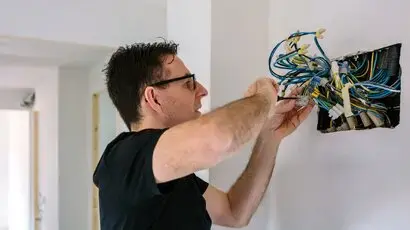
Get your free Melbourne Electrician quote today!
Our team of Melbourne Electricians is here to help you with any questions or concerns you may have. We’re committed to providing you with the best possible service and support.
Electrical systems are the backbone of modern homes, powering everything from lights and appliances to complex entertainment systems. Regular maintenance is crucial to keep your electrical system functioning safely and efficiently. This blog post explores the different types of electrical maintenance homeowners should be aware of.
Imagine rushing to get dinner ready. You reach for the kettle, flick the switch, and nothing happens. Silence. No hum or steam. Annoyance sets in, and you recall that burning smell from earlier. Now, the kitchen light’s flickering unpredictably. This isn’t the first time your electrics have misbehaved. Perhaps it’s about time to stop ignoring these recurring issues and look into some electrical maintenance.
Electrical maintenance isn’t merely about fixing a dodgy appliance or a flickering bulb. It involves taking proactive steps to ensure your entire electrical system functions safely and efficiently. Regular upkeep can help prevent problems like fires, electrical shocks, and power outages. This approach not only protects your home but also saves you money on expensive repairs and replacements over time.
In this blog, we’ll delve into the
different types of electrical maintenance
you should consider, from basic DIY checks to professional inspections, so you can keep your home safe and your appliances running smoothly.
Preventive Electrical Maintenance

Regular electrical maintenance provides a buffer of security and peace of mind for your home or business.
Proactive checks by a qualified electrician can catch minor issues before they become costly repairs or safety threats. This helps
prevent electrical fires, a top cause of property damage. Furthermore, a well-maintained system ensures that your appliances receive clean, stable power, extending their lifespan and possibly reducing your energy bills. Investing in regular maintenance protects your loved ones, property, and wallet, letting you rest easy knowing your electrical system is in top condition.
Don’t Wait for a Spark!
Understanding the different types of electrical maintenance empowers you to keep your system safe and efficient. Preventative care saves money in the long run!
WP Electrical offers custom plans
to
fit your electrical maintenance needs perfectly. Our experienced technicians will assess your system, provide a free consultation or quote, and ensure your electrical health thrives.
Get in touch with WP Electrical today
– don’t wait for an issue to pop up!
